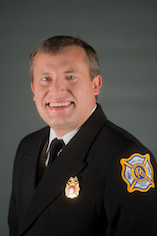When our department first began the accreditation process, it appeared that most of the value was in the external validation of data, policies, and practices. Although important, the most tangible benefit of the accreditation model has been what the self-assessment process has offered. The self-assessment process involves a review of the various performance indicators provided in the Fire and Emergency Services Self-Assessment Manual. The ability to assess your department in an honest and comprehensive manner is a skill honed by too few fire departments, so it can be difficult to complete this process.
The self-assessment process has given our members, regardless of rank or assignment, confidence that our department is always in a constant state of improvement. While we’re never going to be perfect, the commitment to assessing our failures and successes is something that makes accredited departments different from the ordinary ones. Emphasis must be placed on developing an internal capacity to do this work.
Teamwork is essential to self-assessment. Although the accreditation manager is an important player in the process, the real work has to be done by interested subject matter experts within the department. It is the inclusion of these individuals, who have more knowledge of departmental policies and practices than they do accreditation, which produces the real “win” with the entire process. Although department leaders often recognize the value of accreditation, all accredited agencies struggle to gain the knowledge and buy-in from the rank-and-file firefighters. Allowing them the privilege to participate in this process is the “currency” of accreditation.
Indoctrinating accreditation through the self-assessment process is one of the easiest ways to educate members about what accreditation is about and how it can change the organization over time. Often, accreditation is seen by firefighters as a badge of honor rather than a continuous process of improvement. Decals and plaques may be nice, but the fruit of the process is in maintaining good practices, identifying areas of improvement and measuring outputs to ensure long term improvement.
Our department’s leadership believes in accreditation. We’ve watched it complement our strategies to build fire stations, hire more firefighters, and operate more professionally. While all that evidence is important to supporting the accreditation model, the real proof appeared to me during a recent meeting involving a cross section of our department, including some of our newest firefighters. There, in that meeting, those firefighters suggested that they and the rest of the firefighters needed to understand the accreditation model better. They contended that upcoming attrition and retirements might place our department in a vulnerable stat without some succession planning in the accreditation process. You can imagine the satisfaction many of our chief officers felt hearing those words. Although they didn’t understand the intricacies of the standard of cover, strategic plan, self-assessment process, or risk assessment, those firefighters knew that the accreditation process was vital for our success.
Making the self-assessment process and the entire accreditation model part of your department’s DNA is a wise investment in time and effort. The time, effort and energy placed in the process will produce an inclusive culture and dividends for decades to come.
Tom Jenkins, CFO, CEMSO, has served as chief of the Rogers (AR) Fire Department since 2009. He has a bachelor’s degree in fire protection and safety engineering from Oklahoma State University and a master’s degree in public administration from the University of Oklahoma. He is a 2006 graduate of the Executive Fire Officer Program at the National Fire Academy and both a Chief Fire Officer and Chief EMS Officer Designee from the Commission on Professional Credentialing. He is a past president of the International Association of Fire Chiefs.

